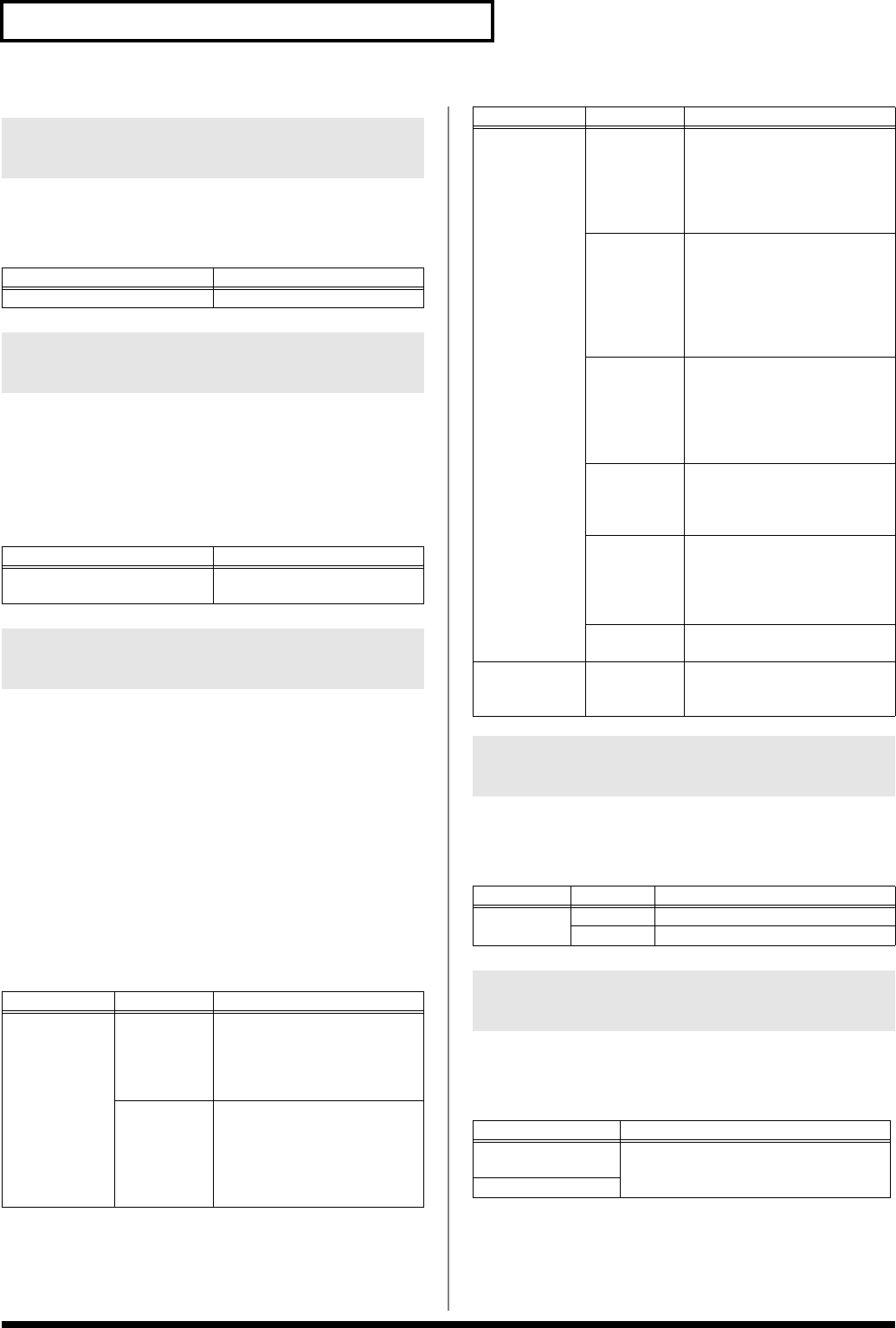
82
Detailed Settings for Each Function ([EDIT])
This switches the appearance of the display. When “INVERT” is
selected, the blue and white portions of the display are the reverse of
what they are when “NORMAL” is selected.
This selects the number of parts for the RD-700SX.
When set to “16PART+PERF,” the performance on the keyboard is
not affected by MIDI messages from the MIDI IN connector or song
data played by the RD-700SX. This is useful when you want to
perform on the keyboard while playing song data with the RD-
700SX.
This sets the tuning and keynote (tonic).
Most modern songs are composed and played with the assumption
that equal temperament will be used, but when classical music was
composed, there were a wide variety of other tuning systems in
existence. Playing a composition with its original tuning lets you
enjoy the sonorities of the chords that the composer originally
intended.
When playing with tuning other than equal temperament, you need
to specify the keynote for tuning the song to be performed (that is,
the note that corresponds to C for a major key or to A for a minor
key).
If you choose an equal temperament, there’s no need to select a
keynote.
Changes the pitch using the “stretch tuning” method typically used
on acoustic pianos. This makes high-range sounds slightly higher in
pitch, and low-range sounds slightly lower in pitch.
Specifies whether General MIDI System On, General MIDI 2 System
On, or GS Reset messages from external MIDI devices will be
received (ON) or not (OFF).
Selecting the Display Appearance
(Display Mode)
Parameter
Value
Display Mode
NORMAL, INVERT
Selecting the Number of Parts
(Part Mode)
Parameter
Value
Part Mode
16PART,
16PART+PERF (Performance)
Setting the Tuning Method
(Temperament/Key)
Parameter Value Description
Temperament EQUAL Equal Temperament. This
tuning divides an octave into 12
equal parts. Every interval
produces about the same
amount of slight dissonance.
JUST MAJ Just (Major). This scale
eliminates dissonance in fifths
and thirds. It is unsuited to
playing melodies and cannot be
transposed, but is capable of
beautiful sonorities.
Temperament JUST MIN Just (Minor). The scales of the
major and minor just
intonations are different. You
can get the same effect with the
minor scale as with the major
scale.
PYTHAGOR
EAN
This scale devised by the
philosopher Pythagoras
eliminates dissonance in fourths
and fifths. Dissonance is
produced by third-interval
chords, but melodies are
euphonious.
KIRNBERGE
R
This scale is a modification of
the meantone and just
intonations that permits greater
freedom in transposition to
other keys. Performances are
possible in all keys (III).
MEAN
TONE
This scale makes some
compromises in just intonation,
enabling transposition to other
keys.
WERCKMEI
STER
This is a combination of the
mean tone and Pythagorean
scales. Performances are
possible in all keys (first
technique, III).
ARABIC Arabic Scale. This scale is
suitable for Arabic music.
Temperament
Key
C, C#, D, Eb,
E, F, F#, G,
G#, A, Bb, B
Sets the keynote.
Precise Modification of Chord
Sonorities (Stretch Tune)
Parameter Value Description
Stretch Tune OFF No stretch tune.
DEFAULT This is the standard tuning curve.
Switching Between Reception of
GM/GM2 System On and GS Reset
Parameter Value
Rx. GM/GM2
System ON
ON, OFF
Rx. GS Reset
Parameter
Value Description
RD-700SX_e.book 82 ページ 2006年3月23日 木曜日 午後2時52分


















